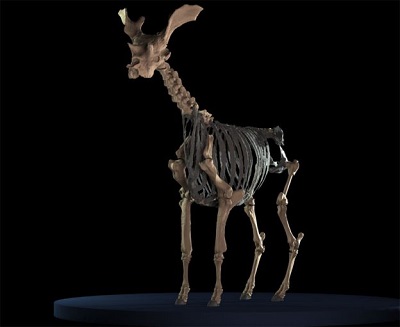A prehistoric giraffe that died out 10,000 years ago might have been the largest ruminant that walked the Earth.
Victorian scientists believed the creature was a giraffe with a trunk and a “missing link” between mammals, according to BBC.
Digital reconstructions of the bones show that while the giraffe was gigantic, the theory that it was as big as an elephant was not true.
The findings, published in Biology Letters, shed new light on the work of 19th Century fossil hunters.
The first fossil specimen was found by the Scottish geologist Hugh Falconer and the English engineer Proby Thomas Cautley on an expedition to the Siwalik hills in India in the 1830s.
In a paper published in 1836, the two men outlined their discovery of an animal with a skull the size of an elephant which they believed had a trunk.
Palaeontologists envisaged it as an elephant sized, moose-like creature – a view that has prevailed.
Largest ruminant
By reconstructing the animal’s anatomy in 3D, he was able to estimate its body mass.
“As a palaeontologist, it is really important to understand the basic question – how big was this animal?” he explained.
The research – carried out with Liverpool John Moores University – came up with an estimated body mass of 1,246kg (857 to 1,812kg range).
This is thought to be an underestimate, as it does not take into account large horns possessed by the males.
Although its size does not approach that of an African elephant, the animal – dubbed “Siva’s beast” – was certainly a large member of the giraffe family and may have been the largest ruminant mammal that has ever lived.
H.Z

